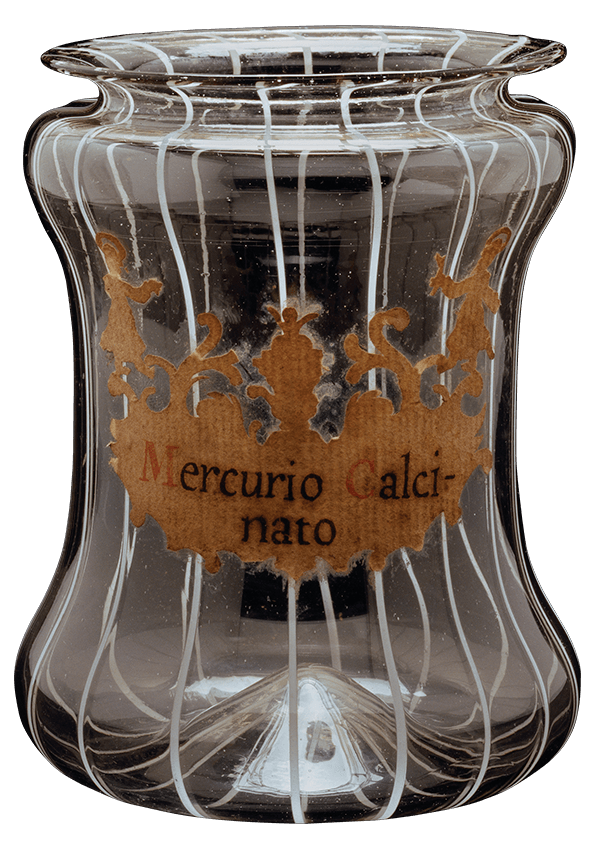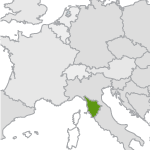Albarello
Albarello
The video shows thin, white canes being made and cut to their required length. They are pre-heated on a ceramic place-holding plate and attached to the exterior of a solid, cylindrical mass of glass that is gradually inflated. Glassblowing is then used to make the vessel.
Transcript
The cores of the canes are transparent glass. So, the making of the cane begins with a small gather of clear glass. This is lowered into a pot of molten, opaque white glass. The glass becomes opaque as it cools. Then, it's thinly dipped back in the transparent glass. The tip is attached to another disk of glass and the cane is formed. The cane is pulled to a length of about 25 feet. The cane is cut into sections about 4 inches long. And the canes are placed on a ceramic plate with grooves. They're heated to a temperature of about 1,000 degrees Fahrenheit. A rather substantial amount of glass is gathered on the end of a blowpipe, marvered to make it perfectly round and elongated, and the canes are immediately attached to its surface. At this point there is no bubble in the gather. The canes stick and, with reheating and marvering, the canes are softened. And using the rubber hose (called the blow hose), air is blown into the blowpipe during marvering. The bubble moves outward. After reheating, the vessel body is shaped. It's inflated, the tip pulled, the constriction is made near the tip and a constriction formed near the blowpipe. Eventually, this is where the vessel will be broken free of the blowpipe.
Blowing continues. The glass is softened. The blowpipe spun to elongate the gather. The jacks are held against the side as air is blown into the blowpipe. The bottom is flattened and pushed firmly while air is blown in, and this creates the bulge. The site where the punty will be added is cooled. The punty is attached to the bottom of the vessel. The constriction held with the cold pincers, the blowpipe tapped, and the blowpipe breaks free. The end is reheated, and the hole opened to a diameter of about an inch and a half. The entire upper portion of the vessel is reheated and the soffietta used to reshape the entire shoulder. The edge is reheated and given an acute flare. The vessel is lowered into the annealer, the metal rod (or punty) tapped slightly, and this breaks it free of the punty.
See all: Browse by Map


